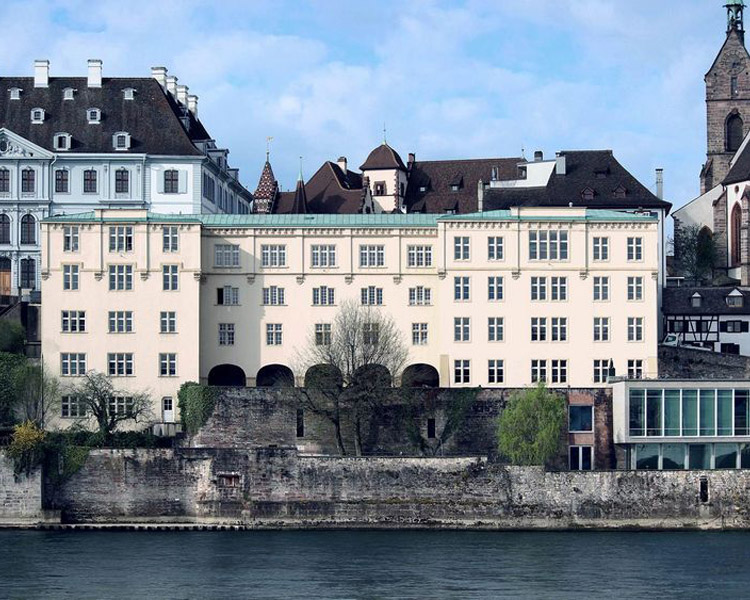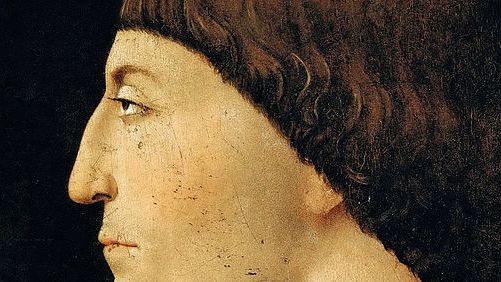SNF-Ambizione-Project
Dr. Theresa Holler: Healing Arts. Representations and Practices of Medical Knowledge in Art and Literature, 9th–12th centuries
The post-antique interest in pharmacology and botany was particularly high in the ninth and tenth centuries: herbaria with elaborated images of plants, poems with pharmacological content, as well as previously unknown ingredients that reached the West via the new trade routes and found their way into textual and visual culture, reveal the importance attributed to the art of healing as a whole. The aim of my project is to unravel the intertwined histories of herbal pharmacology, art, and literature in the Middle Ages. I interrogate the ways in which those visualizations reveal systems of knowledge in which concrete medical practices were being actively articulated and negotiated. I posit that art and poetry were both visually and functionally involved in the healing process and therefore can be literally defined as “healing arts.”
My study is structured around three main lines of inquiry. I begin by analyzing herbals produced between the ninth and twelfth centuries. Here the focus is on the difference between information and knowledge the images provide, i.e. what information do the images transmit beyond the question of whether the plants are botanically correct from a modern perspective. Secondly, I trace how this knowledge produced within herbals was transferred to other contexts and media, such as to pharmacological poems, vegetal ornament, and religious imagery. The relationship between medicine and religion (as seen in depictions of Christ as Physician or Asclepios as Christ) makes up my third subtopic. Finally, I turn to the application and practical use of material and literary culture as potent therapeutics (medicine boxes and healing poems).
Methodologically, my approach incorporates Art History, Literature Studies, and the History of Medicine and includes questions of botany, ecology, and health care. Analysis of overlooked images and textual sources will highlight how medical practice intersected with discursive modes beyond the “medical textbook.” In particular, medicine and religion were not considered opponents. Herbal pharmacology and Christian culture invested in a shared discourse that framed health as physical and spiritual well-being. Healing Arts
SNF Ambizione Project
Dr. Antonia Martínez Ruipérez: The Art of Reason in the Middle Ages. Visualizing reason and rational thought (11th-15th centuries)
The imputation of "irrationality" to the Middle Ages, combined with the complex, multifaceted, and differentiated character of medieval conceptualizations of reason have contributed to a fragmented and fragmentary historical understanding of reason in the medieval period. Medieval images, more than mere "reflections" of textual discussions of reason, will reveal themselves as excellent visualizations of the facets of reason avoided or only obliquely discussed in medieval texts and, also, as powerful tools to trigger and shape the very act of reasoning.
"The Art of Reason" aims to provide a comprehensive study of the idea of reason through the Middle Ages, examining reason as a multi-faceted concept, constructed and conveyed in medieval visual culture, and thereby to both broaden and deepen our historical understanding of this crucial aspect of medieval intellectual and visual culture. In pursuit of this goal, the research will be structured around four core concepts. Rational order mainly encompasses images of God as Divine Reason; Rational thinking encompasses images of knowledge, as well as forms of knowledge developed through images. Virtuous Reason considers reason as a moral tool. Irrationality will examine the role of reason in the construction of medieval identities. Finally, the topos of the sleep of reason will be explored from the Middle Ages to Goya's famous engraving.

The interdisciplinary research partnership Bilderfahrzeuge is located in Basel (Department of Art History), Berlin (Humboldt University of Berlin), Florence (Kunsthistorisches Institut), Hamburg (Warburg-Haus), London (Warburg Institute), and Paris (German Center for Art History). The project, subtitled “Aby Warburg’s Legacy and the Future of Iconology,” invokes the German art and cultural historian Aby Warburg’s concept of the Bilderfahrzeug, which he used to try to uncover and grasp formally articulated continuities between antiquity and the Renaissance in the visual arts. With his famous image atlas, Warburg was able to visualize and make comprehensible these phenomena, which are mobile across time and space. In this context, the goal in investigating the migration of images, objects, goods, texts, and ideas consists in a wide historical and geographic context.
Connected with Warburg’s most famous student, Erwin Panofsky, his iconology proves to be the starting point for a new, genuinely transcultural and transepochal intellectual method for investigating a history of images whose significance has increased due to the visual culture that shapes life today. In this context, our goal is to investigate the migration of images, objects, goods, texts, and ideas in a broad historical and geographic context. Prof. Dr. Andreas Beyer (Basel) is the spokesperson for the research partnership.
eikones - Zentrum für die Theorie und Geschichte des Bildes
eikones – Zentrum für die Theorie und Geschichte des Bildes ist eine interfakultäre und interdisziplinäre wissenschaftliche Einheit an der Universität Basel mit dem Ziel der Koordination und Förderung von Forschung und Lehre bezüglich der Theorie und Geschichte des Bildes.

eikones
Zentrum für die Theorie und Geschichte des Bildes
Rheinsprung 11
4051 Basel, Schweiz
Basel Renaissance Colloquium

The Basel Renaissance Colloquium is organized as an interdisciplinary colloquium—sponsored by the Department of History (Lucas Burkart and Franz-Julius Morche) and the Department of Art History (Aden Kumler) - in the context of the Basel Graduate School of History.
The colloquium was established in 2005 on the initiative of Susanna Burghartz, Achatz von Müller, and Andreas Beyer at the University of Basel as a supraregional discussion forum. With two thematically oriented events per semester, it offers an opportunity for interdisciplinary conversation between all the disciplines that are interested in historical processes of transformation, in questions of tradition formation, and in the construction of historical typologies.
At the center of our interest is the Renaissance as a double-faced projection space: as both an epochal concept and as a category of reflection, as the period of time in which we locate the beginning of modernity while noting at the same time its constantly growing foreignness, but also as a chance for the historical disciplines to understand the central epochal border between the Middle Ages and early modernity as dynamic. For both material and historiographical reasons, a focus on the fourteenth to the seventeenth centuries in this context makes sense for Basel.


